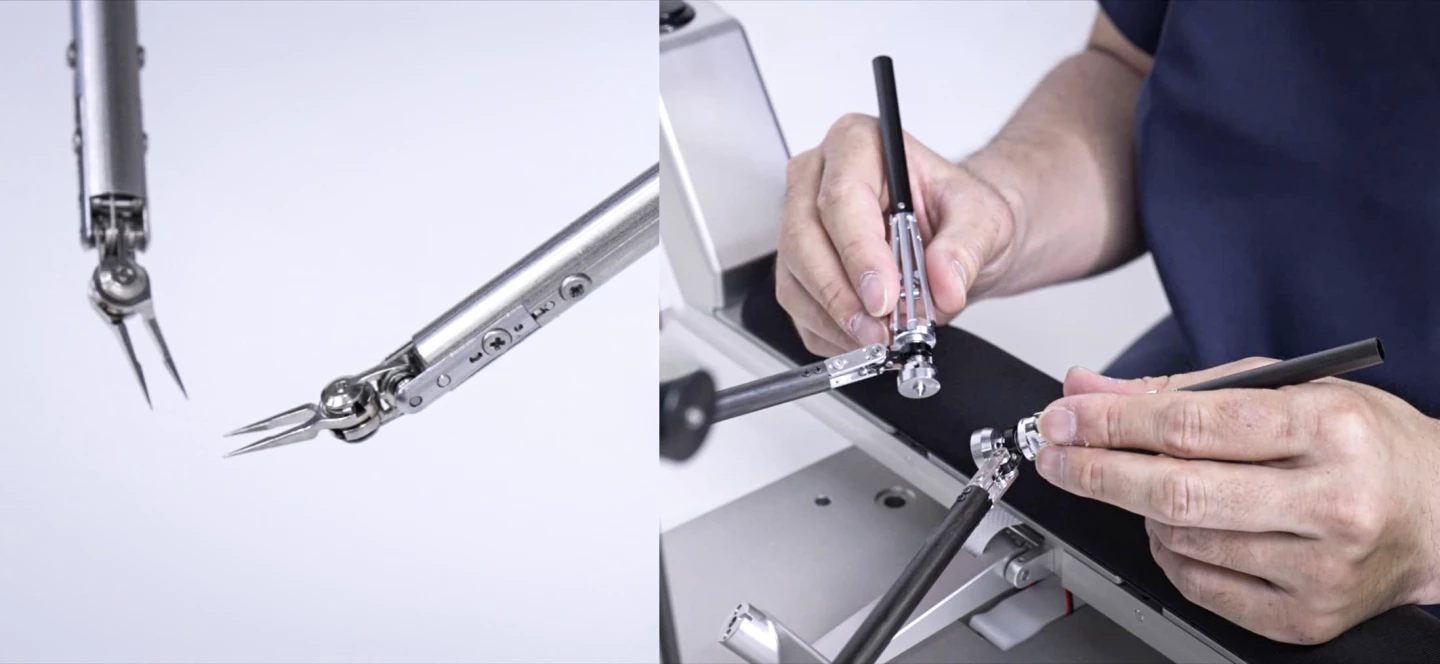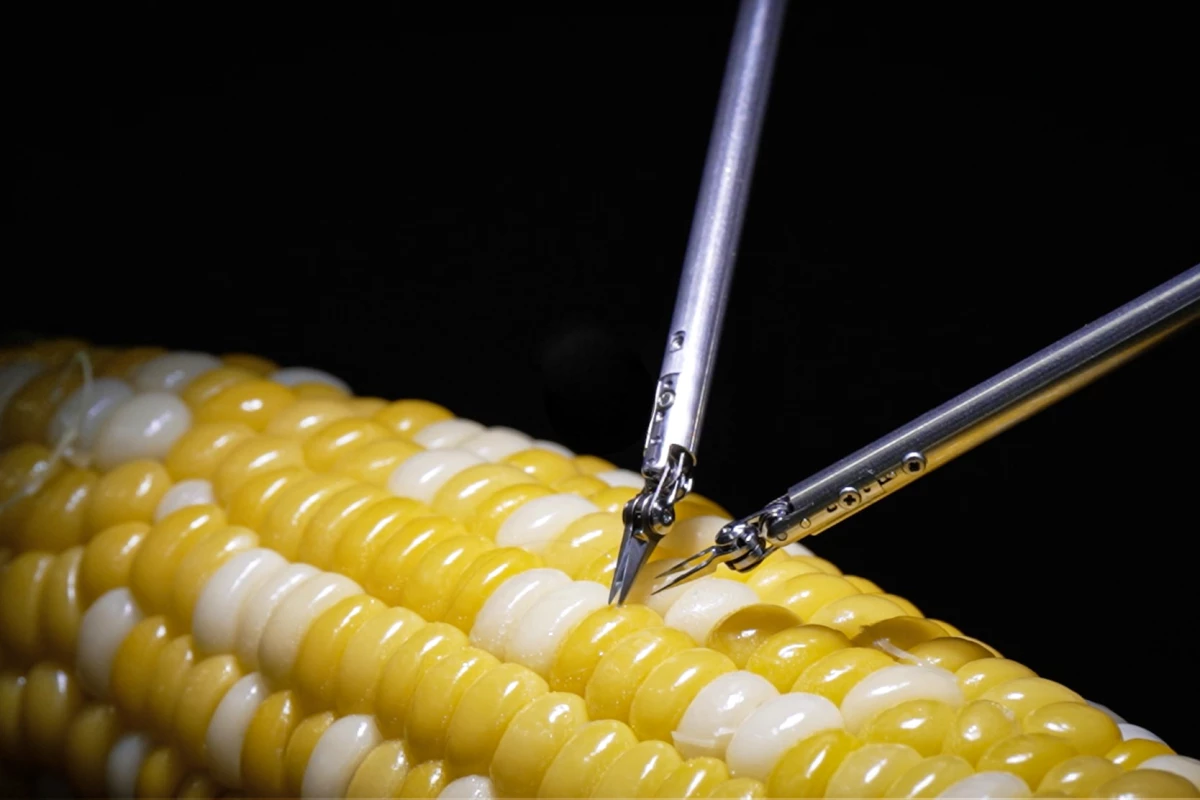Sony has shown off its new surgical robot doing some super-precise work sewing up a tiny slit in a corn kernel. It's the first machine of its kind that auto-switches between its different tools, and has successfully been tested in animal surgery.
It's designed to help in the field of super-microsurgery, a highly specialized field in which surgeons operate on extremely small blood vessels and nerves, with diameters well under 1 mm (0.04 in). As you might imagine, this kind of thing requires incredibly steady hands, and specialists in this field often do their work whole looking through a microscope.
Thus, it's an ideal place for some robotic assistance, and there are a number of surgical robots already in clinical use from companies like Intuitive Surgical, Stryker and others. We're not talking fully autonomous AI-powered robot surgeons here, we're talking teleoperation tools that allow surgeons to magnify their vision while shrinking their hand motions.
In essence, this can completely remove the prerequisite that super-microsurgeons need to be freaks of nature, physically gifted humans with extraordinary control over fine hand and finger co-ordination. A good surgical robot would allow a much wider range of people to do this infinitesimally tiny work using bigger motions and far more wobbly hands.
Sony's camera and TV expertise give it a leg up in terms of the precision imaging here; the robot, currently in prototype form, is a low-latency remote surgery device in which the surgeon uses a pair of squeeze-sensitive, pen-like controllers and watches the real-life effects through a tiny, stereoscopic 4K 3D camera system. This feeds real-time vision through to a pair of OLED screens in what effectively amounts to a strapless, desk-mounted set of VR goggles that the surgeon rests their face in.
Where some of these devices rely on 'motion scaling' – the ability to scale up and down the size of a motion to move between coarse and fine actions – Sony says its small, lightweight controls let surgeons do high-precision work like getting a needle into a tiny blood vessel, while also handling bigger movements like pulling threads, without needing to change scale.

In the same way as surgical assistants need to stand by and hand tools to the surgeon at the drop of a hat, this robot has a unique capability to auto-switch between several instruments. On request, it'll quickly move a given arm back up to a little caddy, and switch tools, returning to the operating site within 10 seconds, promising minimal interruption to the work.
Surgeons – at least those quoted in Sony's marketing materials – appear impressed. "I was able to operate this robot with the same sense of handling forceps and scissors as in regular surgery," says Dr. Hisako Hara in the video below.
"Remote operations that have delays, or different robot movements from my hand movements, leave a negative impression," says Dr. Makoto Mihara. "However, this robot moves as I want it to. It feels like an assimilation between myself and the robot, with the robot moving like my own fingertips... I find this robot highly capable."
The prototype was tested at Achi Medical University (AMU) in February, where it demonstrated its ability to open up super-microsurgery to non-superhumans. Doctors and "medical staff not specialized in microsurgery" were all able to perform an anastomosis – creating a surgical connection between two tubes – on animal blood vessels about 0.6 mm (0.02 in) in diameter.
"It takes months to years of extensive training for even skilled physicians to master this technique," says AMU Professor Munekazu Naito. "In this collaborative study, Sony’s surgical assistance robot technology was tested to assess its capacity to enhance the skills of novice microsurgeons. The results demonstrated exceptional control over the movements of inexperienced physicians, enabling them to perform intricate and delicate tasks with adeptness akin to that of seasoned experts."
Sony says it will continue R&D work to improve the machine and verify its effectiveness, and eventually hopes to "contribute to the advancement of medicine by providing robotic technologies."
Source: Sony







